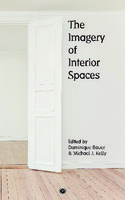The Imagery of Interior Spaces
Contributor(s)
Bauer, Dominique (editor)
Kelly, Michael J. (editor)
Collection
ScholarLedLanguage
EnglishAbstract
On the unstable boundaries between “interior” and “exterior,” “private” and “public,” and always in some way relating to a “beyond,” the imagery of interior space in literature reveals itself as an often disruptive code of subjectivity and of modernity. The wide variety of interior spaces elicited in literature — from the odd room over the womb, secluded parks, and train compartments, to the city as a world under a cloth — reveal a common defining feature: these interiors can all be analyzed as codes of a paradoxical, both assertive and fragile, subjectivity in its own unique time and history. They function as subtexts that define subjectivity, time, and history as profoundly ambiguous realities, on interchangeable existential, socio-political, and epistemological levels. This volume addresses the imagery of interior spaces in a number of iconic and also lesser known yet significant authors of European, North American, and Latin American literature of the nineteenth, twentieth, and twenty-first centuries: Djuna Barnes, Edmond de Goncourt, William Faulkner, Gabriel García Márquez, Benito Pérez Galdós, Elsa Morante, Robert Musil, Jules Romains, Peter Waterhouse, and Émile Zola.
Keywords
literary studies; interior design; architecture; cultural studies; spatialityDOI
10.21983/P3.0248.1.00ISBN
9781950192205, 9781950192199OCN
1100539650Publisher
punctum booksPublisher website
https://punctumbooks.com/Publication date and place
Brooklyn, NY, 2019Classification
Literary theory


 Download
Download